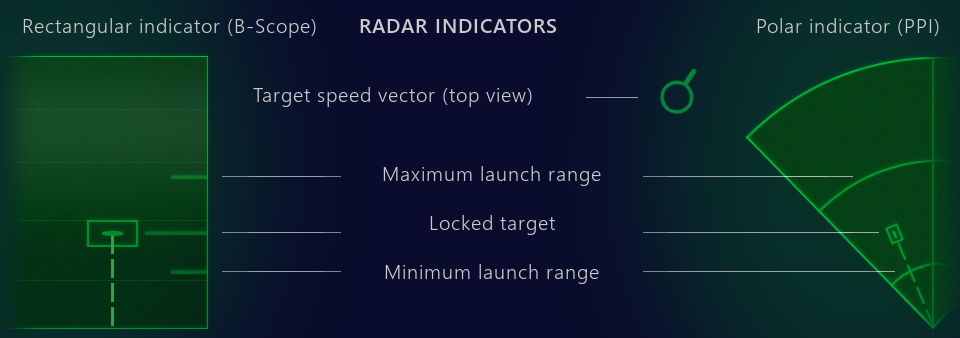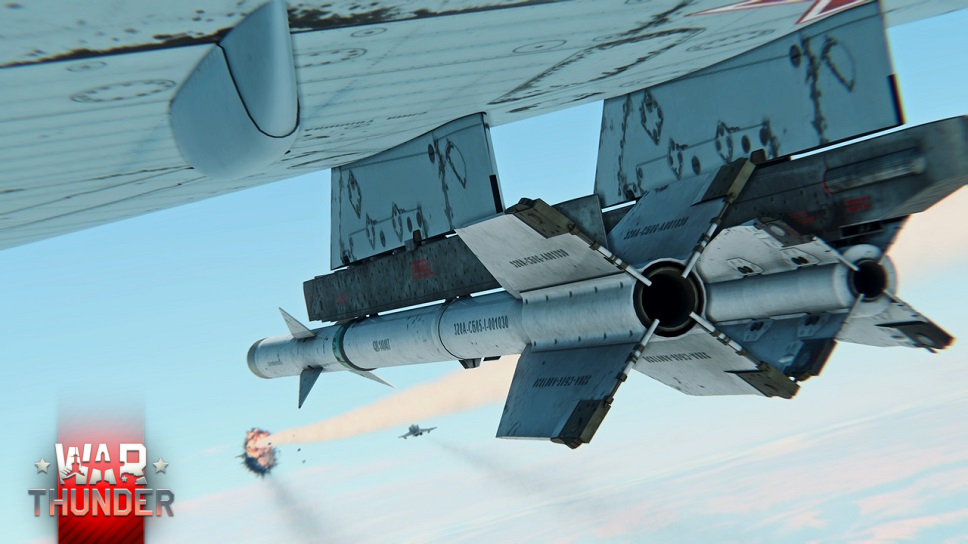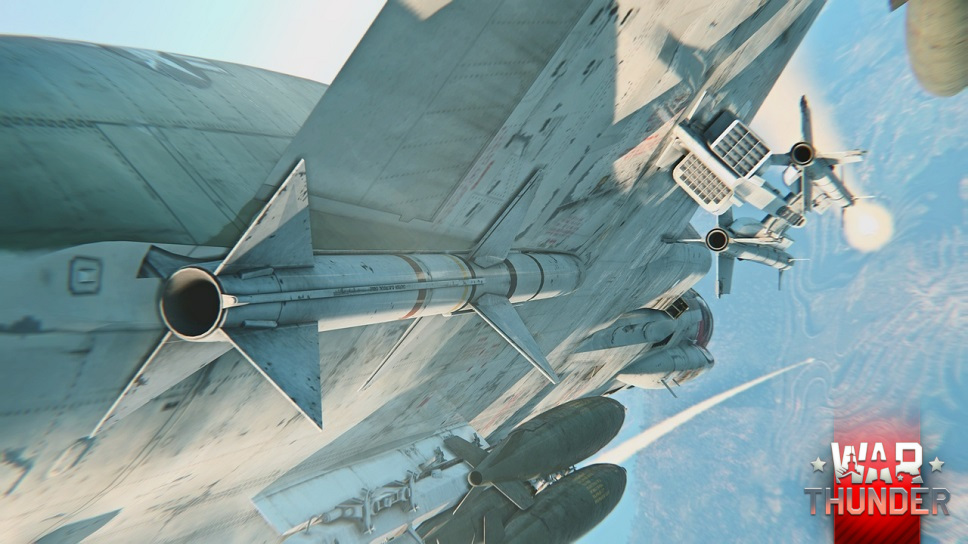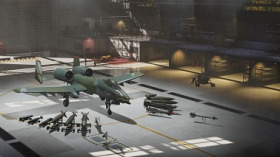
- For PC
- For MAC
- For Linux
- OS: Windows 10 (64 bit)
- Processor: Dual-Core 2.2 GHz
- Memory: 4GB
- Video Card: DirectX 11 level video card: AMD Radeon 77XX / NVIDIA GeForce GTX 660. The minimum supported resolution for the game is 720p.
- Network: Broadband Internet connection
- Hard Drive: 22.1 GB (Minimal client)
- OS: Windows 10/11 (64 bit)
- Processor: Intel Core i5 or Ryzen 5 3600 and better
- Memory: 16 GB and more
- Video Card: DirectX 11 level video card or higher and drivers: Nvidia GeForce 1060 and higher, Radeon RX 570 and higher
- Network: Broadband Internet connection
- Hard Drive: 62.2 GB (Full client)
- OS: Mac OS Big Sur 11.0 or newer
- Processor: Core i5, minimum 2.2GHz (Intel Xeon is not supported)
- Memory: 6 GB
- Video Card: Intel Iris Pro 5200 (Mac), or analog from AMD/Nvidia for Mac. Minimum supported resolution for the game is 720p with Metal support.
- Network: Broadband Internet connection
- Hard Drive: 22.1 GB (Minimal client)
- OS: Mac OS Big Sur 11.0 or newer
- Processor: Core i7 (Intel Xeon is not supported)
- Memory: 8 GB
- Video Card: Radeon Vega II or higher with Metal support.
- Network: Broadband Internet connection
- Hard Drive: 62.2 GB (Full client)
- OS: Most modern 64bit Linux distributions
- Processor: Dual-Core 2.4 GHz
- Memory: 4 GB
- Video Card: NVIDIA 660 with latest proprietary drivers (not older than 6 months) / similar AMD with latest proprietary drivers (not older than 6 months; the minimum supported resolution for the game is 720p) with Vulkan support.
- Network: Broadband Internet connection
- Hard Drive: 22.1 GB (Minimal client)
- OS: Ubuntu 20.04 64bit
- Processor: Intel Core i7
- Memory: 16 GB
- Video Card: NVIDIA 1060 with latest proprietary drivers (not older than 6 months) / similar AMD (Radeon RX 570) with latest proprietary drivers (not older than 6 months) with Vulkan support.
- Network: Broadband Internet connection
- Hard Drive: 62.2 GB (Full client)

In the Raining Fire update, War Thunder saw the addition of a brand-new high-tech armament type – guided air-to-air missiles with a semi-active radar homing (SARH) warhead. Today we’ll be discussing the hardware aspect of the new armament specially designed for seasoned War Thunder veterans.
What are these?
The new semi-active radar homing missiles operate with a signal that is continuously emitted by the radar of the player’s aircraft and reflected back from the target. Such tech grants the armament a series of advantages over heat-seeking infrared guided seekers Firstly, SARH missiles boast almost all-aspect capabilities, allowing the player to engage their enemy from practically any direction, and that includes blowing up right in their face – at this stage, heat-seeking guidance has zero purpose. For the very same reason, the launch range has been greatly boosted, meaning that the launch range is solely restricted by an aircraft’s radar coverage and the level of missile seeker sensitivity. And on many occasions, the launch range even exceeds the range of a visual contact with the target! Moreover, SARH missiles are not affected by the sun and can be launched even in heavily overcast conditions.
Sounds cool? Well, keep in mind this is no ultimate armament. On the first hand, you need to Continuously track the target with your radar until the missile hits, which throws all sharp manoeuvring out of the window. On the second hand, semi-active homing warheads can be confused by ground clutter (a signal reflected from the Earth surface) – something you have to account for when launching and guiding the missile towards the target. Furthermore, if your opponent is sporting an RWR, they might catch on that there’s a missile since they can detect radar emissions.
How are these missiles fired?

Since SARH missiles are capable of locking onto targets that are out of the pilot’s visual range, it might be tricky for the said pilot to estimate the distance to the target. This type of armament has a specific operational range, or the launch envelope, which can be defined as the distance between minimum and maximum ranges of the missile given the present movement parameters of the player’s aircraft and the target. This zone is strictly individual for every missile model and varies with technical characteristics.
The minimum launch range is affected by parameters such as:
- The commit time when the missile begins homing in on the target. For instance, for the R-3R model, this is equal to 0.5 seconds, while for the AIM-7D/E – approximately 2 seconds.
- The post-launch time required to arm the fuse.
- The turn rate of each particular model of missile. For example, if an opponent is flying directly towards or away from the player’s aircraft, the manoeuvring time window of the missile will be minimal, while if the movement trajectory of the opponent’s aircraft is perpendicular to the player’s, the time window will be maximal.
In a similar vein, each missile has a maximum launch range, which depends on:
- The aerodynamics, motor thrust, and firing duration of the missile.
- The flight altitude of the player’s aircraft – the higher its value, the greater the missile’s flight range.
- The flight altitude of the opponent’s aircraft – correspondingly, the higher up in the sky they are, the shorter the flight range of your missiles.
- The speed of the player’s and the opponent’s aircraft, as well as the angle at which the opponent’s aircraft is moving with respect to the player – if they are flying away from you, the maximum launch range is severely reduced.
The armament control system calculates all the aforementioned parameters and helps the player identify the potential launch envelope – the minimum and maximum launch ranges will appear as small marks by the right-hand side of the indicator if the B-Scope (rectangular coordinate system) is used, and as arcs if the radar uses the polar system.

Moreover, the pilot has the indicator of the target’s velocity vector at their disposal. You will find it right under the square marking the locked-on target. If the target’s velocity vector changes laterally, the side component will reveal their speed, and the vertical component – the direction in which they are moving with respect to the player (down and up are towards and away correspondingly).
Don’t expect an “intelligent” armament to do all the hard work for you – if your target changes speed or direction after you have fired the missile, it may not hit the target. Besides, when tracking the target, the missile may be confused by ground clutter. Such a scenario is possible if you are radiating a signal down on the target (in this case, the opponent is situated below the horizon line). This causes the radio waves to bounce off the ground, that might prevent the seeker from tracking down the target. Additionally, there’s even a higher risk of this phenomenon when firing a missile at a low altitude, because the side lobes of your aircraft radar and the missile seeker receive all-ways signals reflected off the Earth surface, which may result in the missile losing its target. To ensure you don’t run into these problems, lock onto the target and launch your SARH missiles when you are positioned below them.
How does the SARH home in on its target?

Unlike IR guided missiles, missiles with a semi-active radio seeker lock onto and track their target and maintain range or speed tracking. Thus, the missile will never become distracted by other targets within the reflected radio-signal acquisition zone while simultaneously ignoring some of the emissions reflected back from ground and water surfaces. The seeker is equally operable whether pulse or continuous wave signal is used. However, different missiles have different subtle aspects depending on targeting mode, and it’s crucial to study them in advance if you wish to make the best use of your SARH missiles.
When bombarding an opponent with pulsed emissions, the guided warhead will home in on the target according to distance – the R-3Rs, Matra R.530 and some others employ this approach. This mode allows the pilot to mark the desired target and fire a missile at it while ignoring other possible targets and parasitic signal reflections off the Earth surface that are reflected at ranges different from the range to the target the missile is locked on. In addition to this, you can lock onto the target of choice before launching the missile. When deploying SARH warheads in pulsed mode, it’s important to remember that locking onto a target positioned below the horizon line or at low altitudes may cause issues. For a perfect lock-on, target opponents at medium and high altitudes – and only if they are level with you or above you. If the distance between you and the target is less than the flight altitude of your aircraft, you can totally neglect the emission bouncing off the ground – under these conditions, the missile is guaranteed to lock onto and track the target.

Specific missiles, like the American AIM-7D/E, track the target based on its radial speed by using the Doppler effect as they are guided by a continuous or pulse-doppler radar signal. In this particular instance, the seeker ignores any targets and signals reflected off the ground surface in the set direction with different speed values. The cons of such technology include the impossibility for the seeker to lock onto a target before launch, issues locking onto a target travelling perpendicular to the movement trajectory of your aircraft, and the reduction of the lock-on range when pursuing fleeing targets. In order to lock onto a target, the missile must travel at least 1–2 kilometres away from the carrier, which renders them useless in a dogfight. These missiles are most effective against opponents moving towards you, as well as against fleeing targets travelling at medium or high altitudes – in this case, the seeker will never misidentify any signal reflected off the Earth surface as objects travelling at the target’s speed.
Be sure to carefully study your armament, test it in different combat scenarios and become a true modern war expert – after all, “intelligent” weaponry is nothing without an intelligent pilot!
The War Thunder Team




Comments (123)
Overall, it is refreshing to see that Gaijin is creating instructional content such as this. Will it be stored in a Wiki for future reference? Perhaps a new section on the wiki dealing with how all the controls work? Also you are incorrect it is not a warhead (see - "a brand-new high-tech armament type – guided air-to-air missiles with a semi-active radar homing (SARH) warhead.") Remove "warhead", replace with "guidance system".
love how they only just tell us this now, weeks after they were added. War Thunder is that dad that tries to teach his son to ride a bike... AFTER he has already fallen off his bike hundreds of times, and already figured it out by himself by now. so this is a "little too late" situation. a lot like war thunders bug "fix" updates.
please remove the f4c like you removed the maus it is so obsolete at its br
Fire and Forget Hellfires when?
Admins/Moderators - any chance you can moderate this comments/forum in accordance with your rules which say 1. no off topic posting 3. no bug reporting ... etc. Also why does it display older comments prior to the newest comments?
So how do we turn on these different indications? I can't find anything that turns on the firing envelope.
Trash. Absolutly the worst update you guys have had so far. No rwr functionality and OP SARH Missles. I love getting to altitude and then dying with no indications.... glad i ground my way to top tier to get immediatly killed. Way to go guys. Back to playing good games I guess.
Bro no one said it was gonna be easy u gotta have that free cam looking dude! Crying about it isn't gonna make you better you gotta invest some time in new habits ig.
Do you think we'd every get to see the German Ha-1112? Or heck i'd get it as a premium! Such a sick plan from the battle of britain and dunkirk!
Who would've thought that I'd ever have to research about Doppler techniques for a video game. Excellent article Gaijin! Nicely done.
This is awesome and all, but when will we see more post-ww1 aircrafts? I’ve been waiting for the Curtiss T-32 Biplane Bomber for China which lacks any sort of unique planes. I would pay ANYTHING to get my hands on new post-ww1 aircraft. This is the aircraft https://forum.warthunder.com/index.php?/topic/452339-curtiss-bt-32-condor-blast-from-the-past/ it’d be super awesome if you added it! Also a question about SARH, do the missiles lose speed over time or is the flight speed fixed to a certa...
Submit a complaint